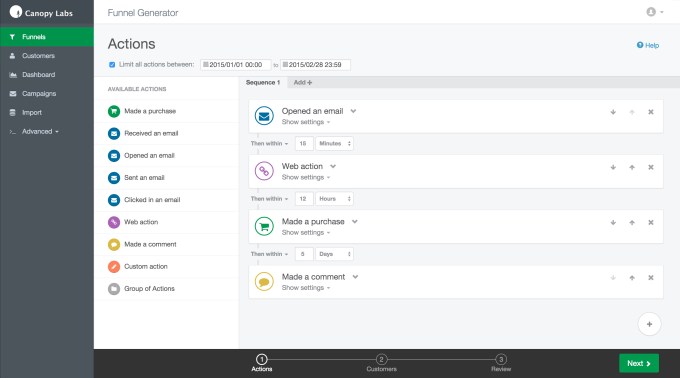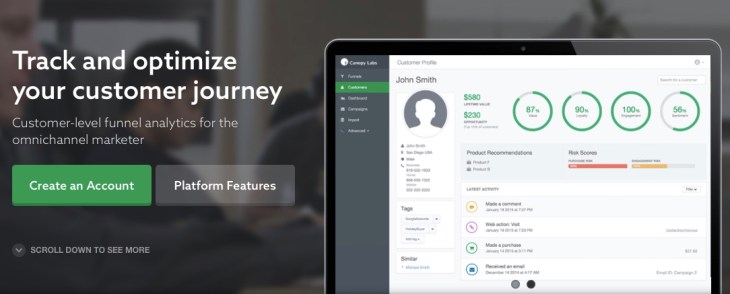Y Combinator-backed Canopy Labs has relaunched with the aim of giving businesses a detailed understanding of customer journey, i.e. where a customer is in the buying process.
I last wrote about the startup back in 2012, when it raised $1.5 million in venture funding. For someone who doesn’t spend a lot of time looking at customer data (like me!), the vision from back then may not sound all that different from what it is now. The big selling point used to be helping businesses identify their most valuable customers.
Co-founder and CEO Wojciech Gryc told me that the relaunch represents “more of an expansion of our existing model” than a real pivot.
“Business intelligence isn’t really the big problem for a lot of these companies,” Gryc said. “The real issue is understanding and optimizing the customer journey that people go through.”
To illustrate what Canopy Labs is trying to do now, he compared it to analytics company Mixpanel, which allows you to understand the sales funnel on a website or app. Gryc said Canopy’s new tools allow you to do something similar, but in harder-to-measure situations, like in brick-and-mortar retail stores.
He also highlighted the fact that the product can accommodate “fuzzy” funnels, where it’s not a straightforward, step-by-step process leading to a sale.

As examples, Gryc said an e-commerce company could merge sales data, web browsing data, and survey data to understand which customers experiences lead to high Net Promoter Scores versus low ones. Or a pro sports team (yep, some of those teams are part of Canopy Labs’ customer base) could merge ticketing, stadium, email and website data to understand where fans like to sit and then direct their marketing messages accordingly. Or a travel company could merge travel data, browsing data, and their customer data to understand how and when to pitch people on new travel ideas.
If that seems like a pretty broad range of use cases, well, that’s part of the point.
“That’s one of the really unique things about us,” Gryc said. “Optimization tools like ours are usually vertical-specific — they’re only for retail, they’re only for nonprofits, and so on. We’ve actually built the underlying modeling engine and querying engine to be broader than that.”
